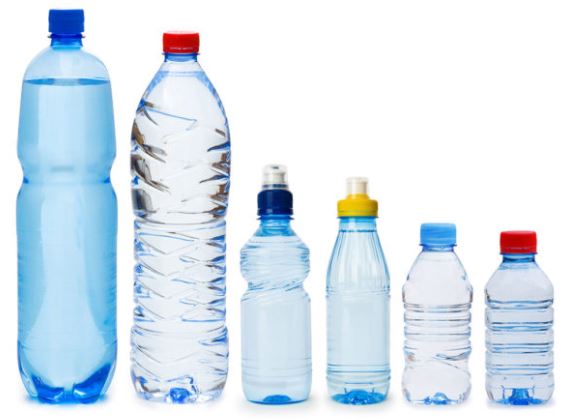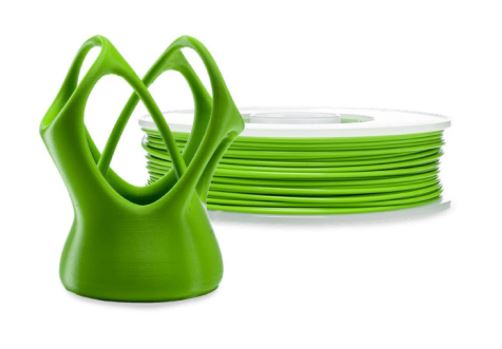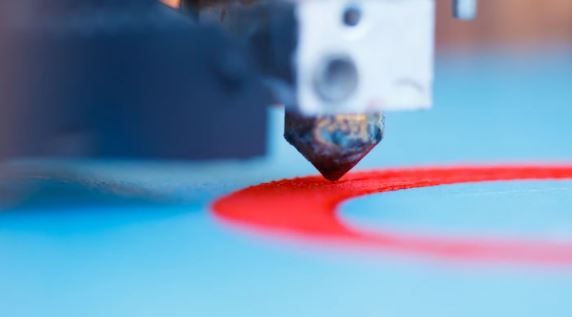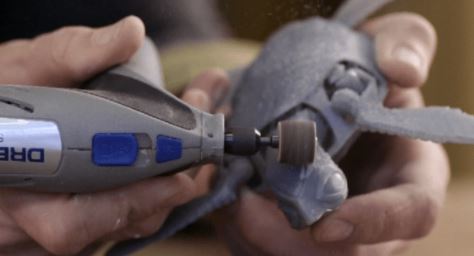In this quick reference guide, let's break down the major differences between PLA and PETG.
Material Properties Comparison
PETG Material Properties

- Density – 1.27 g/cm3
- Thermal Coefficient Expansion – 60 µm/m-°C
- Max Service Temperature – 73°C
- Bed Temperature - 70 – 80°C
- Extruder Temperature – 230 – 250°C
- Recommended Build Surfaces – Glue Stick, Painter’s Tape
- Price – $20 – $60 per kg
Areas Of Strength
- Chemical & fatigue resistant
- Water resistant
- No odor when printing
- Smooth and glossy finish
Areas Of Weakness
- Not for hard structural applications
- Poor bridging
- May curl off thin hair on the build plate
PLA Material Properties

- Density – 1.24 g/cm3
- Coefficient of Thermal Expansion – 68 µm/m-°C
- Extruder Temperature – 190 – 220°C
- Bed Temperature – 45- 60°C
- Price (per kg) – $10 – $40
Areas Of Strength
- Low cost
- Easy to learn to use
- Wide range of colors and blends
- Great for non functional prototyping
- Biodegradable
- Can be solvent welded using dichloromethane
- Easy post processing
Areas Of Weakness
- Low heat resistance
- Machine processing is difficult
- Lower tensile strength for hard use
- Very brittle
- Prone to oozing due to heat (Fast cooling required to prevent oozing)
Major Differences

PLA and PETG are both thermoplastics. They can soften above a specific temperature and resolidify again once cooled down. The main differences are their material properties in several key areas:
Strength
PLA material gives good aesthetics, and the material gives more flexibility to create very complex shapes
PETG material has stronger physical strength properties
Shapes
PLA works a lot better on a dual extruder 3D printer and can provide a much smoother surface to the part than PETG. However, any part can be smooth with the correct smoothing technique including PETG.
Temperature Tolerance
PETG requires a higher extruder temperature than PLA.
Energy Absorbption
PETG can handle weather and sunlight far better than PLA.
Transparency
If printing a part with see-through property, the PETG is the easiest material to achieve that result. However, there are also PLA materials with clear filament to choose from.
Post Processing

Post-processing both PETG and PLA printed parts can be achieved with good techniques. Generally speaking, it's much easier to post-process with PLA than PETG.
As far as bonding goes, PLA is difficult to glue to another part. Try some cyanoacrylate (super glue)
For bonding PETG, use polyurethane because it can pretty much handle anything such as PETG to PETG, PETG to PLA, PETG to Metal, wood, glass...etc
Recyclability
Both PETG and PLA materials can be recycled. PLA is partially biodegradable but it can't be recycled just like regular trash.
PETG doesn't break down as easy as PLA, but it's still recyclable and repurposed for something else
Printing Performance Differences
Bed Adhesion
PETG requires a slightly hotter bed temperature than PLA. Both materials can stick to the bed well with proper preparations.
For printing on a glass bed, be sure to use some hairspray or some PVA glue to prep the surface.
Extruder Temperature
PLA requires a lower extruder temperature than PETG, even though both materials have different blends to choose from.
Stringing and oozing
PETG material tends to string and ooze, and the user has to find the perfect temperature range to reduce stringing and at the same time not to lower the temperature to the point of causing nozzle clogging.
Filament Density
PETG has a higher filament density than PLA. Different filament has slightly different densities so it's not always a constant number.
Generally, PETG is about 1.27 g/cm³, and PLA is about 1.24 g/cm³
Support
As long as the support and the distance are properly set in the slicing software, both of them work well. From experience, PETG requires higher distance separation between the support and the model than PLA
